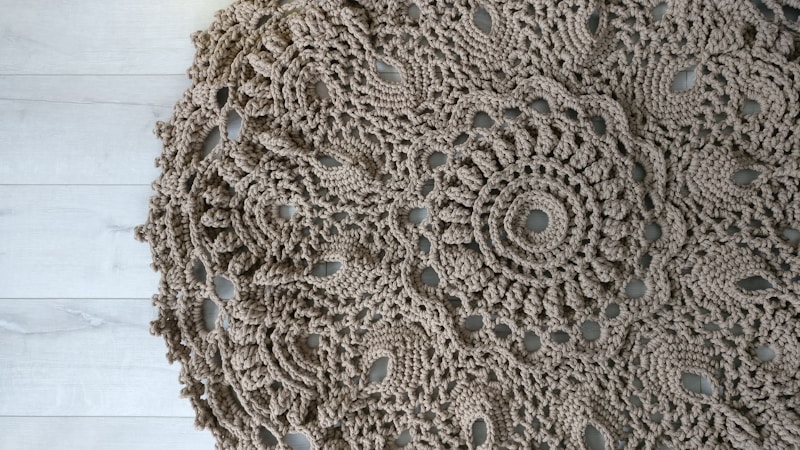Discover the Art of Intricate Lace Designs: A Journey into Elegance and Craftsmanship
Understanding Intricate Lace Designs
Intricate lace designs are a beautiful form of textile art that has been cherished for centuries. Various cultures around the world have developed their own unique styles and methods, making lace one of the most diverse decorative arts. In this article, we will explore what intricate lace designs are, their history, techniques, and modern applications in various fields.
The History of Lace Making
Lace making has a rich history that dates back to the late 15th century in Europe, especially in countries like Italy, Belgium, and France. Lace was initially crafted by hand, which made intricate lace designs a symbol of wealth and status. As lace-making techniques evolved, new styles emerged, such as needle lace, bobbin lace, and crocket lace, each featuring unique characteristics and patterns.
Key Historical Milestones in Lace Design
| Period | Development |
| 15th Century | Emergence of hand-made lace in Europe |
| 16th Century | Introduction of needle lace techniques |
| 17th Century | Rise of bobbin lace in Belgium and France |
| 19th Century | Development of machine-made lace, making it more accessible |
Techniques Used in Creating Intricate Lace Designs
There are several key techniques that artisans employ to create intricate lace designs. Each technique contributes to the unique characteristics of the lace produced. Here are some of the most prominent methods:
- Bobbin Lace: This technique involves twisting threads around bobbins to create intricate patterns. The threads are held in place on a lace pillow.
- Needle Lace: Created using a needle and thread, this technique allows for detailed designs and is often used for making fine lace.
- Crochet Lace: Made with a hooked needle, crochet lace often has a more textured appearance and can include motifs and decorative stitching.
- Cutwork: This involves cutting designs into a fabric base and then reinforcing the edges with stitches, giving a unique and delicate aesthetic.
Popular Patterns in Intricate Lace Designs
Intricate lace designs come in various patterns, each reflecting different cultural influences and artistic styles. Some popular patterns include:
- Floral Motifs: These designs often incorporate flowers and leaves, making them perfect for bridal wear and home decor.
- Geometric Designs: Characterized by lines and shapes, geometric patterns are often used in modern lace applications.
- Baroque Styles: The lavish styles of the Baroque period emphasize complex patterns and opulence.
- Classic Venise Lace: Known for its heavy use of embellishments and 3D designs, often seen in vintage fashion.

Modern Applications of Intricate Lace Designs
While intricate lace designs have their roots in traditional textiles, they have found various applications in modern fashion and decor. Here are some ways lace is being repurposed in contemporary settings:
Fashion Industry
Intricate lace designs are widely used in high fashion and bridal gowns. Designers like Valentino and Elie Saab frequently incorporate lace into their collections, creating breathtaking pieces that exhibit the beauty of intricate craftsmanship.
Home Decor
Lace isn’t just for clothing. It has permeated the world of home decor as well. Intricate lace curtains, tablecloths, and wall hangings add a touch of elegance and sophistication to any space.
Craft and DIY
With the rise of the DIY culture, many crafters are exploring lace design in their projects. From scrapbooking to handmade cards, lace embellishments can enhance creativity and add delicate detail.
Challenges in Lace Making
Despite its beauty, lace making is not without challenges. The level of skill required to produce intricate patterns can be daunting for beginners. Additionally, those working with fine threads must contend with the fragility of the fabric, which can be easily damaged. However, the reward of creating exquisite lace designs makes such challenges worthwhile.
Tips for Beginners in Lace Making
If you’re interested in diving into the world of lace making, here are some helpful tips to get you started:
- Start Simple: Choose simple patterns to develop your skills before attempting more intricate designs.
- Invest in Quality Materials: High-quality threads and tools will improve your results and make the process more enjoyable.
- Join a Community: Connect with other lace makers through online forums or local classes to share tips and motivate each other.
- Practice Persistence: Lace making requires patience and practice. Don't get discouraged by initial difficulties.
Conclusion: The Timelessness of Intricate Lace Designs
Intricate lace designs embody a timeless beauty that has fascinated generations. As we shed light on the history, techniques, and modern applications of lace, it's clear that the art of lace making remains relevant, adapting to contemporary styles while honoring its rich heritage. Whether you wish to wear intricate lace in a stunning garment or showcase it in your home, understanding its significance and craftsmanship opens doors to appreciating this exquisite art form. Remember, lace making is as much about the journey as it is about the finished product, so embrace the process and enjoy every stitch!